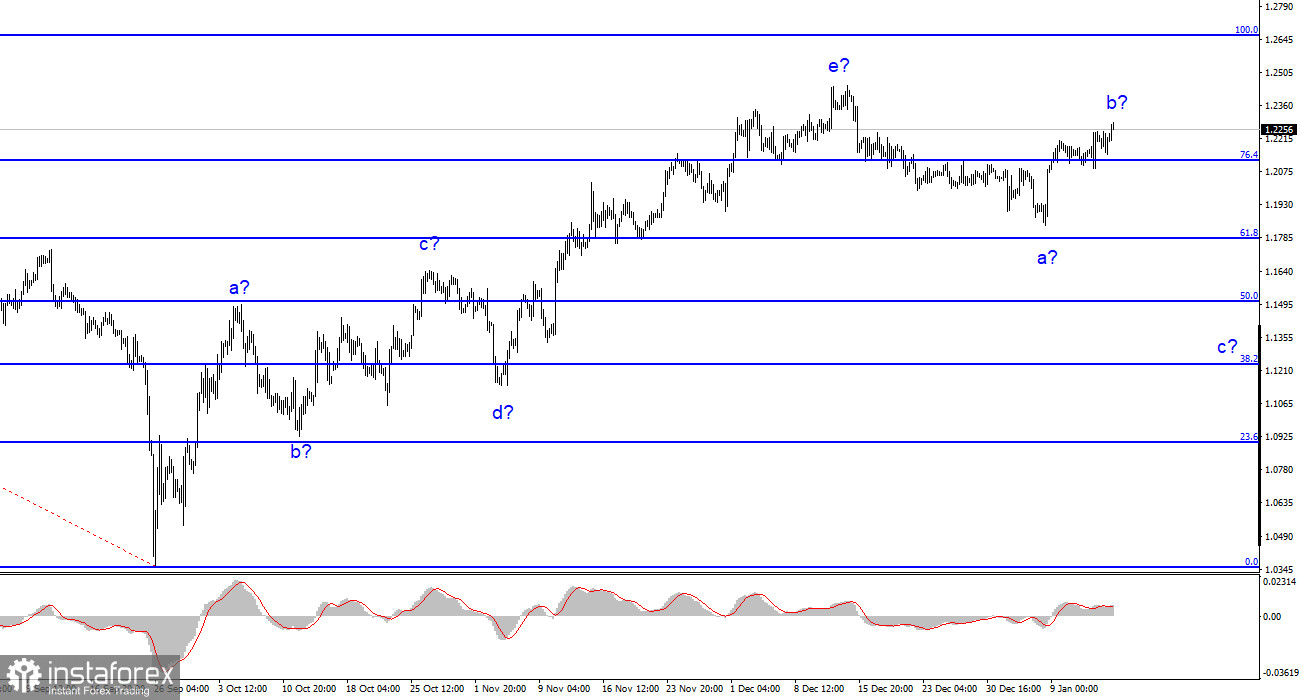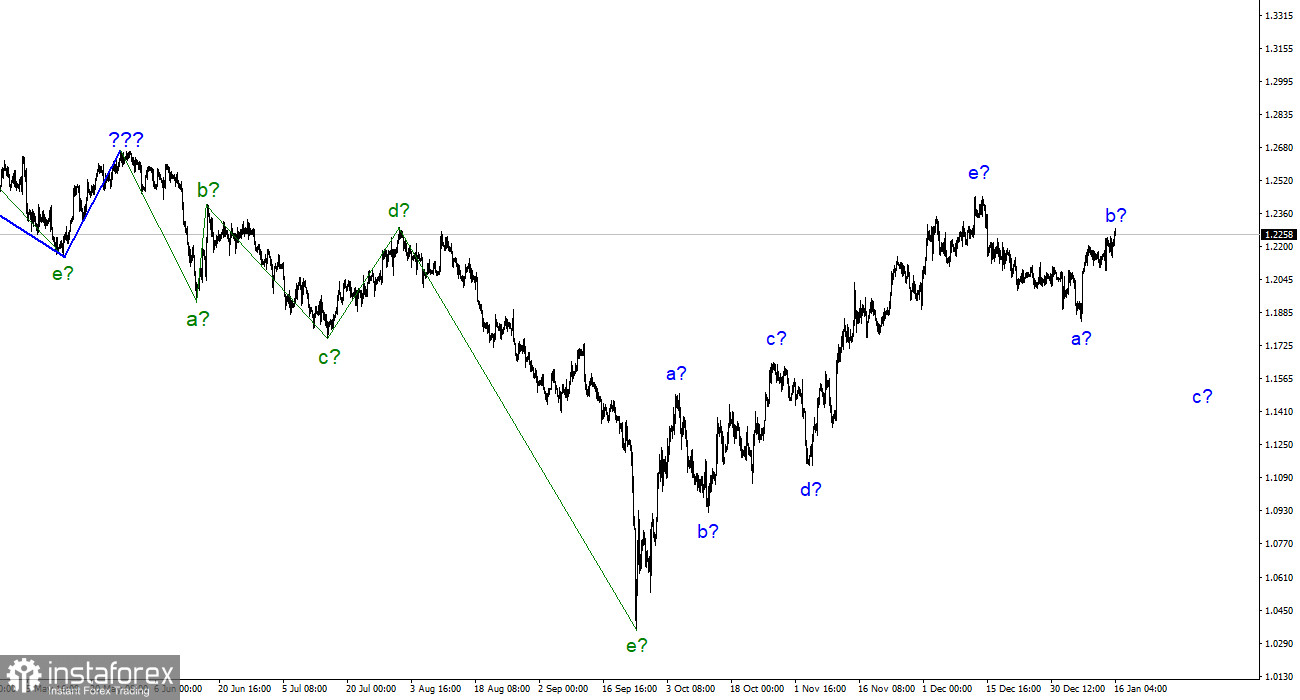
The wave markup for the pound/dollar instrument currently appears rather complex, but it also doesn't call for any explanations and starts to diverge dramatically from the markup of the euro/dollar instrument. Our five-wave ascending trend section has the form a-b-c-d-e and is most likely already finished. Since there has been a very active departure of quotes from previously reached highs in recent weeks, the likelihood of the British pound completing the upward trend segment has increased noticeably. As a result, I can say that the downward part of the trend has started to form and will include at least three waves. And as part of this segment of the trend, which can take both a five-wave and a five-wave impulse, the increase in the instrument's quotes over the past several days may be wave b. However, the drop of the British should continue because there has only been one downward wave created thus far, and it has not been in the strongest or most compelling shape. There is no limit to how many times or how long the rising phase of the trend can become more convoluted, but this is not a typical occurrence. I continue to attempt to expand upon the conventional wave structures, which can be utilized for both work and prediction.
The pound might rise again if inflation somewhat declines.
On Tuesday, the pound/dollar exchange rate increased by 90 basis points. As a result, the presumed wave b continues to form, and the likelihood that the rising trend segment won't be complicated decreases. The UK will have a fantastic opportunity today to begin constructing a downward wave c, but for this to occur, the market must appropriately respond to the UK inflation report for December. Although it's hard to call this situation "right," the market currently does not anticipate a significant drop in the consumer price index in December. This might be the cause of the rise in British quotes from yesterday. If inflation falls slowly or does not fall at all, the Bank of England will have a new reason to raise interest rates more quickly and forcefully. Additionally, raising rates benefits the British.
However, the coin also has a negative side. As Andrew Bailey stated yesterday, he anticipates a significant decline in inflation this year due to the recent sharp decline in gas prices. I also think that this element will contribute to a slowing of prices. If so, today's data might be more encouraging than the market anticipates. The demand for the British pound may decline if inflation falls below 10.5%, preserving the possibility of establishing a negative trend. The actual report will be made public in a few hours. The downward trend section will stay in place if the instrument keeps moving upward until the predicted wave e peak is revised.

Conclusions in general
The building of a downward trend section is still assumed by the wave pattern of the pound/dollar instrument. According to the "down" reversals of the MACD indicator, it is possible to take into account sales with objectives around the level of 1.1508, which corresponds to 50.0% by Fibonacci. The upward portion of the trend is probably over, however, it might yet take a longer form than it does right now. However, you should exercise caution when making sales at this time because the value of the pound tends to rise.
The euro/dollar instrument and the picture seem extremely similar at the larger wave scale, which is fortunate because both instruments should move similarly. Currently, the upward correction portion of the trend is almost finished (or has already been completed). If this is the case, a downward portion will likely be built for at least three waves, with the possibility of a drop in the region of figure 15.
 English
English 
 Русский
Русский Bahasa Indonesia
Bahasa Indonesia Bahasa Malay
Bahasa Malay ไทย
ไทย Español
Español Deutsch
Deutsch Български
Български Français
Français Tiếng Việt
Tiếng Việt 中文
中文 বাংলা
বাংলা हिन्दी
हिन्दी Čeština
Čeština Українська
Українська Română
Română

